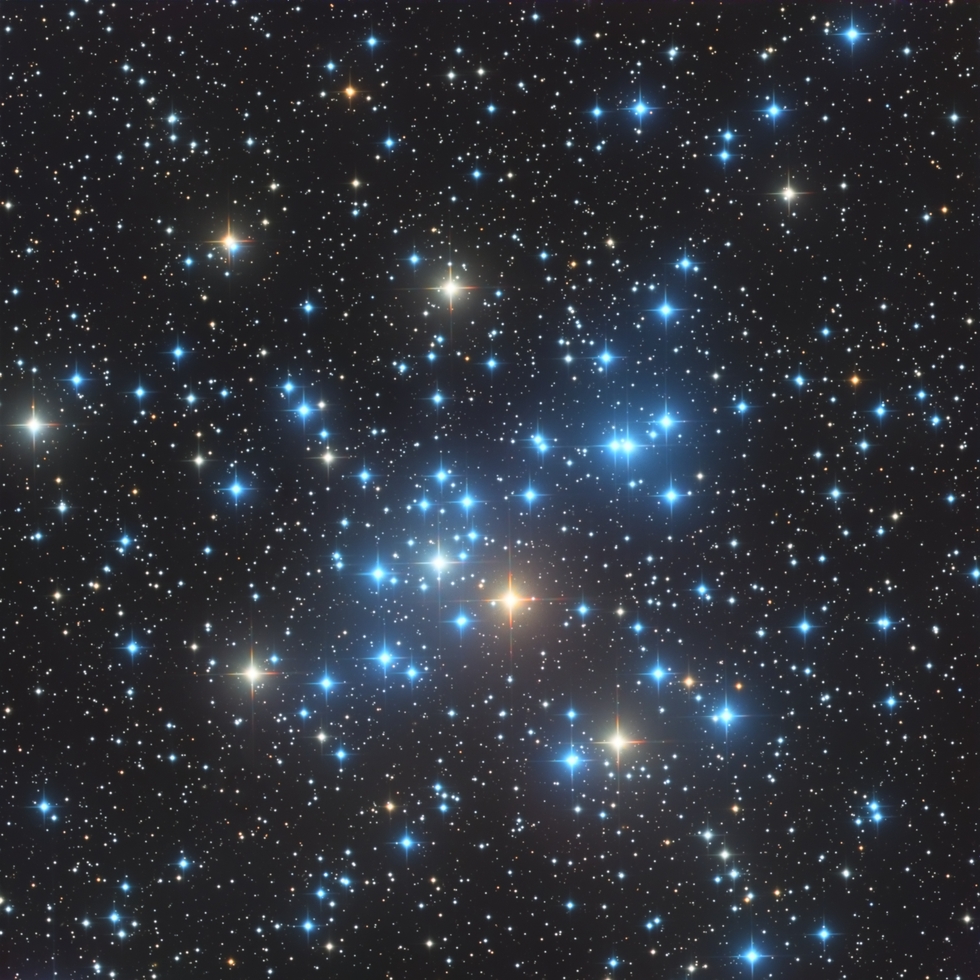Messier 41 - Little Beehive
Messier 41 - Little Beehive
Messier 41 / Little Beehive Cluster is an open cluster located in Canis Major constellation, at approximately 2.300 light-years from Earth. It was discovered by Giovanni Batista Hodierna before 1654, but apparently it was known since Ancient History, since the time of Aristotle (IVth century BC). It was catalogues by Charles Messier on 16.01.1765, describing it as “nothing more than a cluster of small stars”.
Located 4° south from Sirius (α CMa), the cluster covers an area almost equal that of the Full Moon and it has an apparent brightness of 4,3. It has close to 100 stars, including several red giants – the brightest one is HIP 32406 with an apparent magnitude of 6,3, being 700 times brighter than the Sun – but also a couple of white dwarves. Its diameter is 25 light-years and it’s moving away from us at 23 km/s. The age of the cluster is 190 million years, and the studies on its dynamics showed that it will stay as a group for another 300 million years.
Located 4° south from Sirius (α CMa), the cluster covers an area almost equal that of the Full Moon and it has an apparent brightness of 4,3. It has close to 100 stars, including several red giants – the brightest one is HIP 32406 with an apparent magnitude of 6,3, being 700 times brighter than the Sun – but also a couple of white dwarves. Its diameter is 25 light-years and it’s moving away from us at 23 km/s. The age of the cluster is 190 million years, and the studies on its dynamics showed that it will stay as a group for another 300 million years.
SPECIFICATIONS
Telescope
CHI-1-CCD / Planewave CDK 24"
Camera
FLI ProLine PL9000
Location
El Sauce, Chile
Date of observation
Feb, Mar, Nov 2022
Filters
LRGB
Processing
PixInsight



